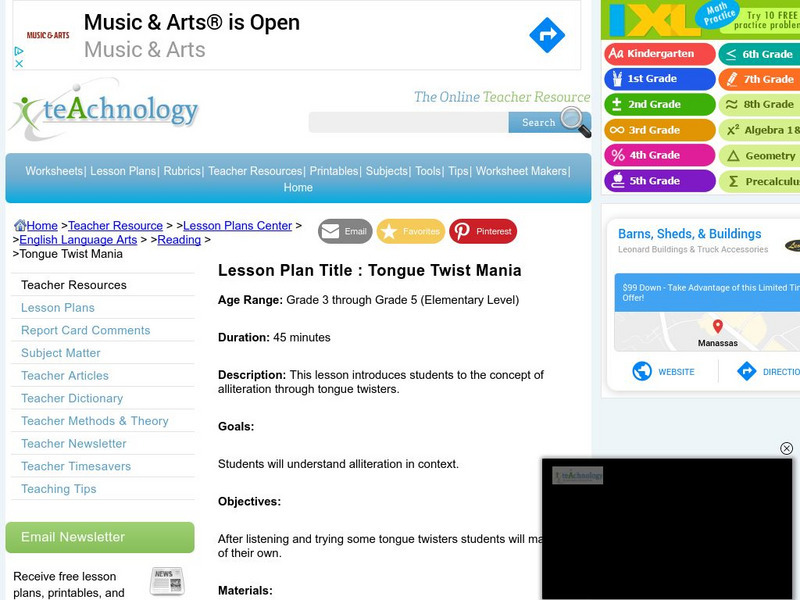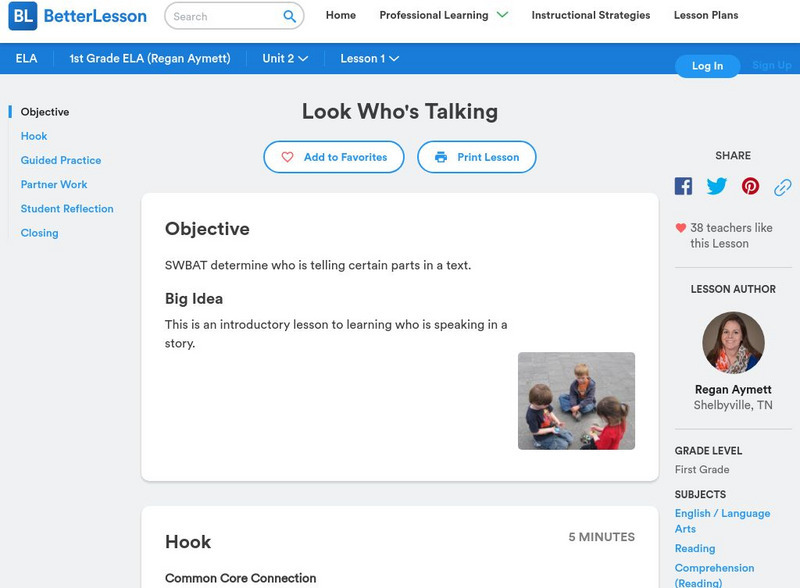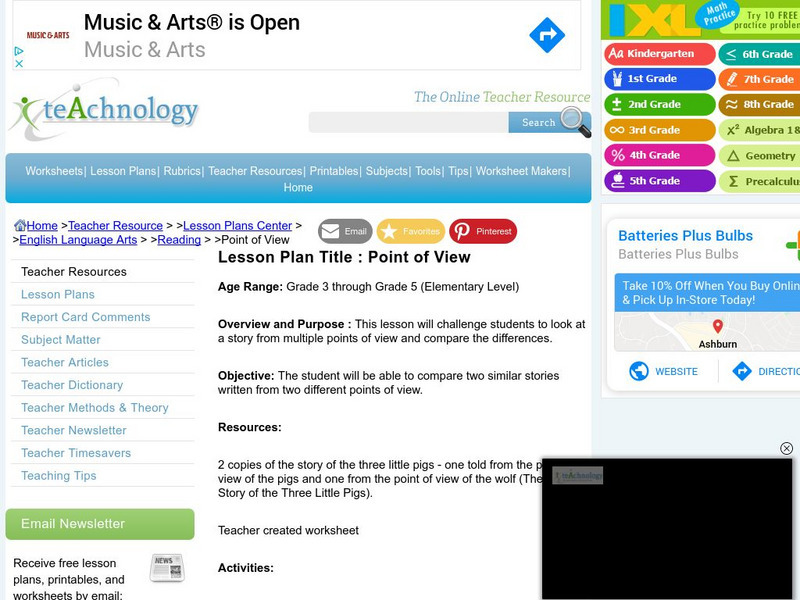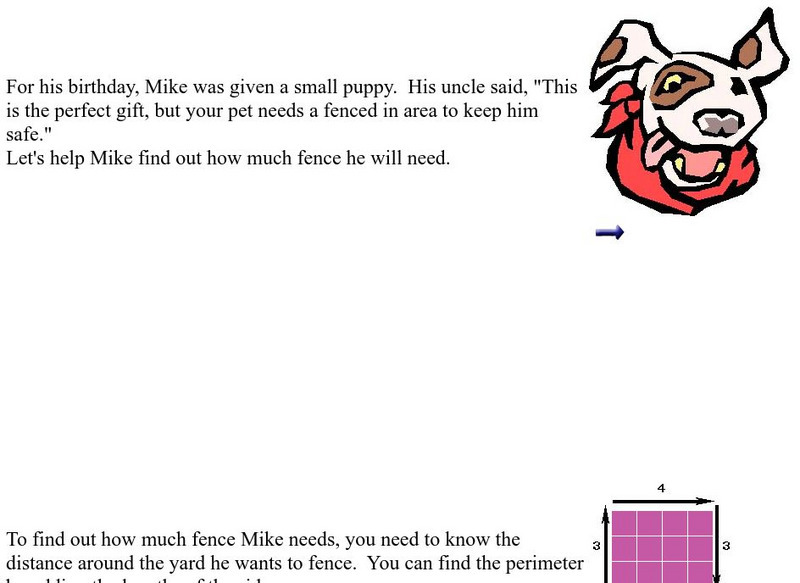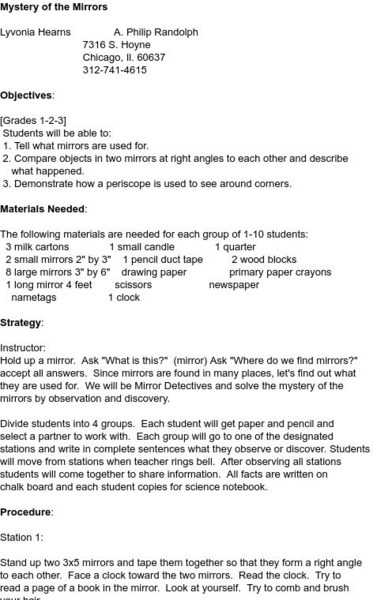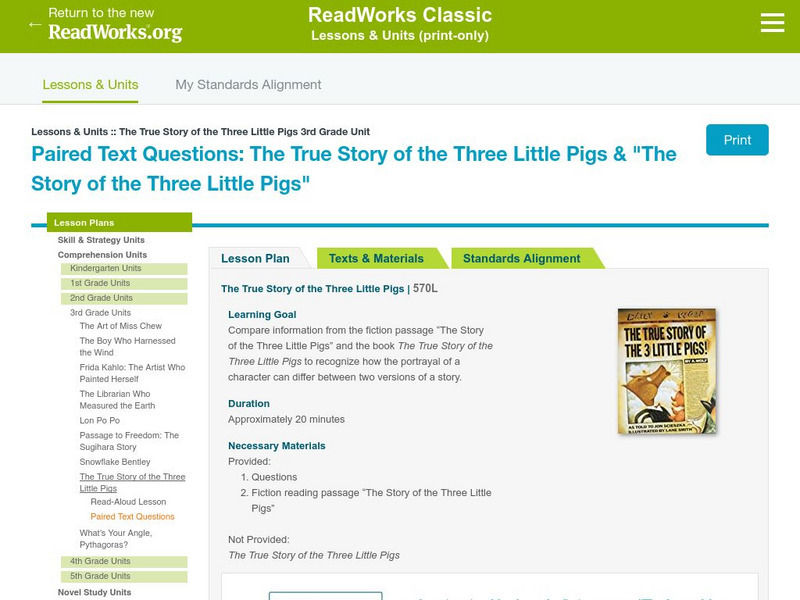Common Sense Media
Common Sense Media: Education: Lesson: Digital Trails
[Free Registration/Login Required] Does what you do online always stay online? Students learn that the information they share online leaves a digital footprint or "trail." Depending on how they manage it, this trail can be big or small,...
Better Lesson
Better Lesson: Email Clarifying Questions
At the end of this lesson plan, learners will demonstrate the use of commas, clarifying questions, and a friendly letter format by sending an email. Email is part of student's lives, and it is part of the digital landscape they will need...
Other
Rice Romp: Place Value Lesson Plan
Take a look at the mathematics involved in the story "One Grain of Rice". Included is a lesson plan, geared toward 2nd-grade math students, about place value. A link to a quiz on the story is included.
Teachnology
Teachnology: Lesson Plan: Tongue Twist Mania
For this lesson students practice saying tongue twisters, read Dr. Seuss' Oh Say Can You See, and then write orginal tongue twisters of their own.
Better Lesson
Better Lesson: Look Who's Talking
This is an introductory lesson to learning who is speaking in a story. The students do this specific skill after the teacher models it in the hook. They get guided practice sorting and labeling who is talking in the guided practice and...
Better Lesson
Better Lesson: The Power of Questions
Students will have the opportunity to work collaboratively by using the Think-Pair-Share technique to ask questions about a story. Included are examples of student's questions, and a Think-Pair-Share poster and document.
Other
Free Phonics Lessons: Digraphs ( Ph, Gh) as in "Alphabet," and "Laugh"
This lesson teaches the ph and gh digraphs through examples and practice.
Better Lesson
Better Lesson: Comparing Things!
Second graders explore numbers in a variety of ways to understand how to compare three-digit numbers based on an understanding of place value. This lesson includes an interactive number line video, samples of student work, and a...
Better Lesson
Better Lesson: The Recipe for a Great Word Problem
The big idea of this lesson is to have students write their own word problems to help them have a better understanding of mathematical operations, as they relate to real world scenarios.
Teachnology
Teachnology: Lesson Plan: Point of View
For this lesson, pupils compare/contrast two versions of "The Three Little Pigs" including the traditional from the pigs' point of view and "The True Story of the Three Little Pigs" by Jon Scieszka and Lane Smith version as told from the...
Better Lesson
Better Lesson: Skip Counting Patterns
Are there repeating patterns in number counting? Recording skip counts may help reveal patterns that can be used in solving later math problems.
HotChalk
Hot Chalk: Lesson Plans Page: Wants and Needs
Lesson plans for teaching the fundamental economic concept of needs and wants for grades 1 and 2 using the book The Rag Coat by Lauren Mills. Students work in groups to discuss and classify various images to illustrate the difference...
HotChalk
Hot Chalk: Lesson Plans Page: Consonant Digraphs
What is a digraph? The objective of this lesson plan is that pupils will be able to recognize and use consonant digraphs in sentences and speech.
HotChalk
Hot Chalk: Lesson Plans Page: Changes With Acids & Bases
This lesson plan is designed to introduce young learners to chemical changes in acids and bases.
Beacon Learning Center
Beacon Learning Center: Fence Me In!
Students can practice calculating the perimeter of rectangles in this interactive web lesson.
Better Lesson
Better Lesson: Trimester Assessment Day
It is important to assess understandings of concepts that students have worked on before moving ahead with new concepts or higher level thinking.
Utah Education Network
Uen: Healthy and Unhealthy Behaviors
This lesson teaches students to identify the differences between healthy and unhealthy behaviors. Included are graphic cards that the students will use to make a classroom chart of healthy and unhealthy behaviors.
Science and Mathematics Initiative for Learning Enhancement (SMILE)
Smile: Mystery of the Mirrors (1 3)
This lesson plan from the Illinois Institute of Technology incorporates observation with hands on activity through various stations.
TED Talks
Ted: Ted Ed: How Do Germs Spread? Why Do They Make Us Sick?
Germs are found on almost every surface we come in contact with, which makes it incredibly common for our bodies to be exposed to them. But why are some of these germs relatively harmless, while others can be fatal? The creators of this...
CPALMS
Cpalms: Home Is Where the Heart Is: Researching Habitats
[Free Registration/Login Required] In this lesson, young scholars will learn about different types of habitats as they gather information based on provided research questions. Students will summarize the information from their research...
Other
Wisewire: Grade 3 Playlist: Clues to Unknown Words Using Known Roots
A dictionary is not the only way to figure out the meaning of new words. Readers also can look for familiar word parts. These word parts might appear in other words that readers already know. By looking for familiar word parts, including...
University of Nebraska Omaha
Ec Ed Web: If You Give a Mouse a Cookie
This lesson plan is cross-curricular, economics and literature. Using the book "If You Give a Mouse a Cookie," students will understand cause and effect and unlimited want, goods and services.
Read Works
Read Works: Paired Text Questions: "The True Story of the Three Little Pigs"
[Free Registration/Login Required] Compare and Contrast two versions of "The True Story of the Three Little Pigs". Lesson plan and student questions are included.
Other popular searches
- Esl Lessons
- Elementary Lessons
- Math Lessons
- Art Lessons
- Money Lessons
- Preschool Lessons
- 2nd Grade Lessons
- Art Lessons Primary
- Esl Lessons Grammar
- High School Lessons
- 3rd Grade Lessons
- Middle School Lessons


